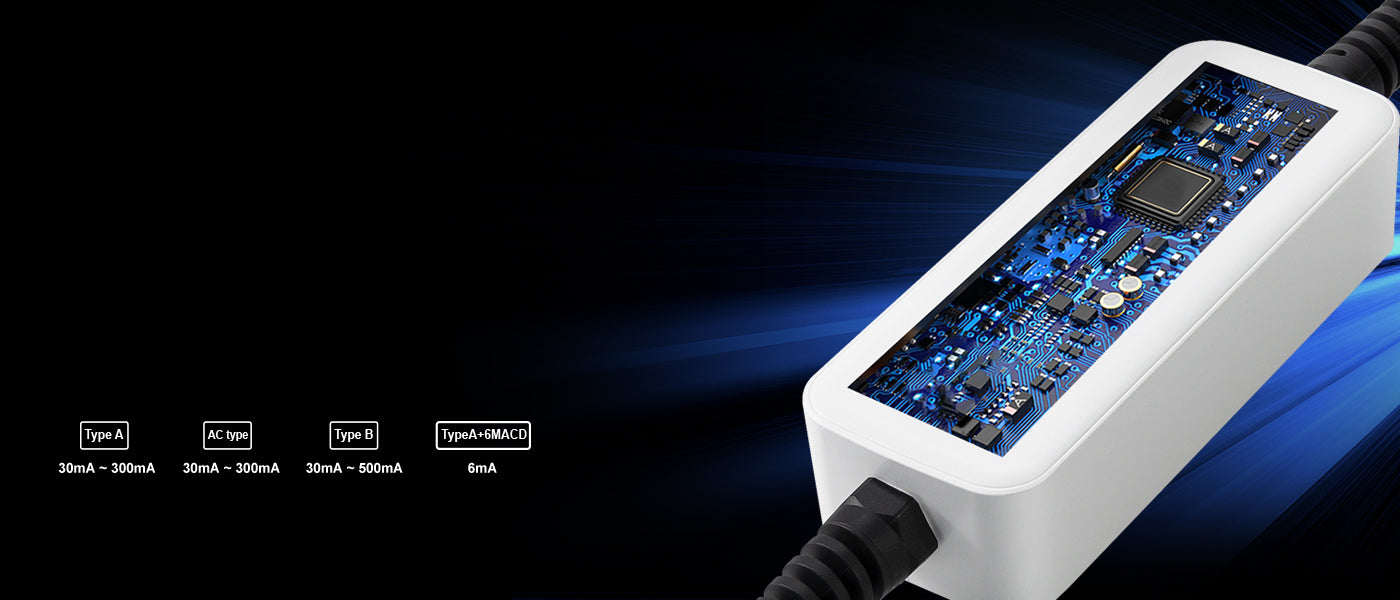As electric vehicles (EVs) gain popularity worldwide, the demand for efficient and accessible charging solutions has grown significantly. Among the various charging standards, the Type 2 charger, also known as the Mennekes connector, stands out as a common and versatile option for many EV users. In this blog, we will explore what a Type 2 EV charger is, its technical specifications, and how to use it effectively.
What Is a Type 2 EV Charger?
The Type 2 EV charger is a European standard for EV charging, featuring a seven-pin design. This connector type is prevalent in Europe and is gradually becoming a standard in other regions. Its design allows for both alternating current (AC) and direct current (DC) charging, making it a versatile option for various charging needs.

Technical Specifications of Type 2 Chargers
Type 2 chargers come with a range of technical specifications tailored to different charging needs. They are designed to support both AC and DC charging, making them highly adaptable.
AC Charging: The Type 2 connector typically supports AC charging with power levels ranging from 3.7 kW to 22 kW. AC charging can be performed using either a single-phase or three-phase power supply. Single-phase charging is common in residential settings and can deliver up to 7.4 kW, while three-phase charging is often used in commercial or public charging stations and can provide up to 22 kW. The speed of AC charging depends on both the power output of the charging station and the vehicle’s onboard charger capacity.DC Charging: For rapid charging, the Type 2 connector is also compatible with DC charging solutions, although the DC fast charging typically uses a different connector (CCS - Combined Charging System) in conjunction with Type 2. DC fast charging can deliver power up to 350 kW, significantly reducing charging times compared to AC charging. This is particularly beneficial for long-distance travel and public charging stations.
Voltage and Current: Type 2 chargers operate at various voltage levels, generally ranging from 230V for single-phase systems to 400V for three-phase systems. The current can vary based on the power level, with typical values ranging from 16A to 32A for AC charging.

Compatibility and Standardization
The Type 2 connector is widely adopted due to its compatibility with numerous EV models and brands. It adheres to the International Electrotechnical Commission (IEC) standard IEC 62196, which ensures that it meets safety and performance requirements. This standardization is crucial for promoting interoperability among different EVs and charging networks, making it easier for users to charge their vehicles at various locations.
Standardized connectors like Type 2 contribute to a more seamless and user-friendly charging experience. They reduce the complexity and confusion associated with different charging plug types and help to accelerate the development of charging infrastructure. The widespread use of Type 2 connectors in Europe and other regions supports the growth of EV adoption and helps to build a reliable and accessible charging network.
How to Use a Type 2 EV Charger
Using a Type 2 EV charger is generally straightforward, whether at a public charging station or at home. Here’s a step-by-step guide to help users navigate the process:
Locate a Charging Station: For public charging, find a Type 2-compatible charging station using a charging network app or website. Many public charging stations are equipped with Type 2 connectors, although some may offer other types of connectors as well.Connect Your Vehicle: Once you arrive at the charging station, plug the Type 2 connector into your vehicle’s charging port. Ensure that the connection is secure and that the vehicle’s charging port is properly aligned with the connector.
Authenticate and Start Charging: Depending on the charging station, you may need to authenticate your session using an RFID card, mobile app, or other methods. Follow the instructions provided by the charging station to initiate the charging process.
Monitor Charging Progress: Many charging stations and vehicle apps allow you to monitor the charging progress in real-time. You can track the current charge level, estimated completion time, and other relevant information.
Disconnect and Finish: Once the charging session is complete, unplug the Type 2 connector from your vehicle and the charging station. Ensure that both the connector and the vehicle’s charging port are clean and free of debris.
Safety Precautions: Always follow safety guidelines when using a Type 2 charger. Avoid charging in wet conditions, and ensure that the charging cable is not damaged. If you encounter any issues, consult the user manual or contact the charging station provider for assistance.

Installation of a Type 2 Charging Station at Home
Installing a Type 2 charging station at home offers several benefits, including the convenience of charging your EV overnight and potentially saving on charging costs. Here’s a detailed guide on how to install a Type 2 charging station at home:
Assess Your Electrical System: Before installation, have a qualified electrician assess your home’s electrical system to ensure it can handle the additional load of a Type 2 charging station. This may involve checking your electrical panel, wiring, and overall capacity.
Choose the Right Charging Station: Select a Type 2 charging station that meets your needs. Consider factors such as charging speed, power rating (e.g., 7.4 kW or 22 kW), and any smart features like Wi-Fi connectivity or scheduling.
Obtain Necessary Permits: In some regions, you may need permits for installing a charging station. Check local regulations and obtain any required permits before proceeding with the installation.
Install the Charging Station: Hire a licensed electrician to install the charging station. The installation typically involves mounting the unit on a wall or pedestal, connecting it to your electrical system, and configuring any necessary settings.
Test the Installation: Once installed, test the charging station to ensure it operates correctly. Verify that it properly communicates with your EV and delivers the expected power output.
Consider Future Upgrades: If you plan to upgrade your EV or increase your home’s electrical capacity in the future, discuss these possibilities with your electrician to ensure your charging station can accommodate any changes.
Safety and Maintenance: Regularly inspect the charging station for any signs of wear or damage. Keep the area around the station clean and free of obstructions. If you encounter any issues, contact the manufacturer or a professional for support.
Finding Type 2 Charging Stations Near You
Finding Type 2 charging stations near you is essential for convenient EV ownership. Here’s how to locate Type 2 charging stations in your area:
Use Charging Network Apps: Several apps and websites provide real-time information about charging stations. Popular apps like PlugShare, ChargePoint, and Zap-Map allow you to search for Type 2 chargers based on your location. These platforms often include user reviews, ratings, and details about the availability of each station.
Check EV Manufacturer Resources: Many electric vehicle manufacturers offer tools to help you find compatible charging stations. Visit your EV manufacturer’s website or app for location-based charging station maps and information.
Consult Local Charging Networks: Some regions have local charging networks that may not be covered by global apps. Research regional charging providers and check their websites for a list of Type 2 charging stations.
Use Navigation Systems: Many modern EVs come with built-in navigation systems that include charging station locators. Use your vehicle’s navigation system to find nearby Type 2 charging stations and plan your routes accordingly.
Explore Public Charging Stations: Type 2 chargers are often installed at public locations such as shopping centers, parking garages, and government buildings. Look for charging stations in these areas to ensure you have access to reliable charging options.
Contact Local EV Owners’ Groups: Joining local EV owners’ groups or forums can provide valuable insights into the best charging locations and tips from fellow EV users.
By using these resources, you can easily find Type 2 charging stations and ensure that you have access to convenient and reliable charging options for your electric vehicle.
Benefits of Using Type 2 Chargers
The Type 2 charger offers several advantages, making it a popular choice among EV owners:
Widespread Availability: Type 2 chargers are widely available in public charging networks and residential installations, providing easy access to charging infrastructure.
Cost-Effectiveness: Compared to some other charging solutions, Type 2 chargers are relatively cost-effective. This makes them a practical choice for both individual users and commercial applications.
Environmental Impact: By supporting a standardized connector, Type 2 chargers contribute to the broader adoption of electric vehicles, helping to reduce greenhouse gas emissions and promote sustainable transportation.
Enhanced User Experience: Standardization and compatibility simplify the charging process, making it more convenient for users to find and use charging stations.
Future Developments in Type 2 Charging Technology
The future of Type 2 charging technology is promising, with several advancements on the horizon:
Faster Charging: Ongoing developments aim to increase charging speeds, reducing the time required to charge EVs. Innovations in both AC and DC charging technologies are expected to enhance the efficiency of Type 2 chargers.
Smart Grid Integration: Type 2 chargers may integrate with smart grid systems, enabling more efficient energy management and supporting the use of renewable energy sources.
Enhanced Features: Future Type 2 chargers may incorporate advanced features such as wireless charging, improved safety mechanisms, and enhanced user interfaces.
Expanded Infrastructure: The continued expansion of charging infrastructure will increase the availability of Type 2 chargers, making it easier for EV owners to charge their vehicles in various locations.
Conclusion
The Type 2 EV charger is a vital component of the electric vehicle charging landscape, offering versatility, compatibility, and convenience. As electric vehicles become more prevalent, understanding and utilizing Type 2 chargers will be essential for ensuring a smooth and efficient charging experience. With ongoing advancements in technology and infrastructure, the future of EV charging looks bright, promising a more sustainable and accessible transportation ecosystem.



